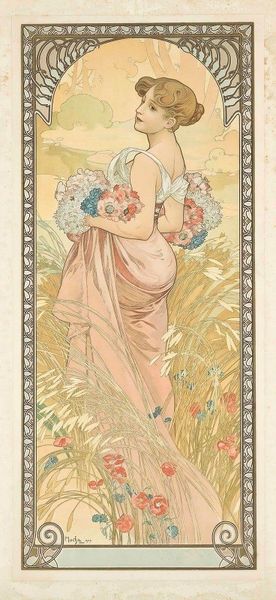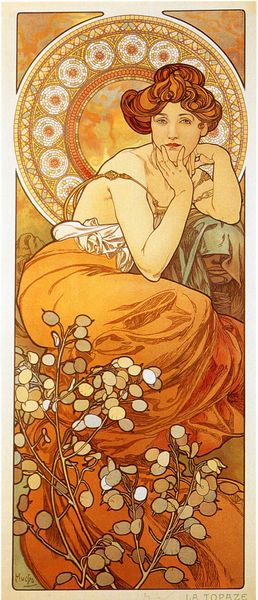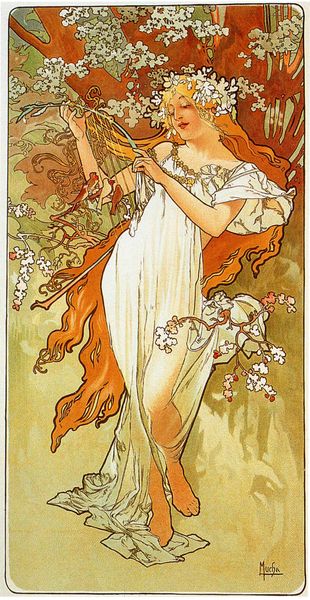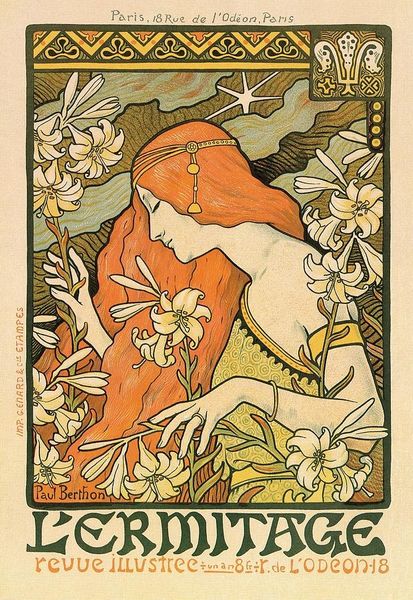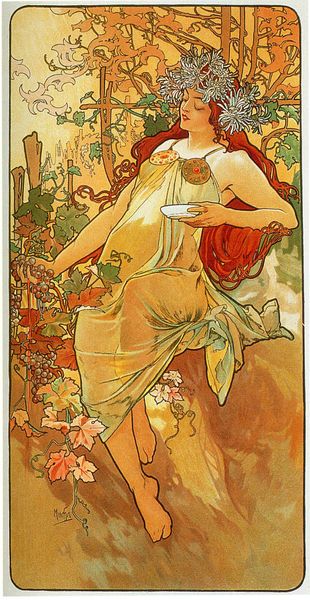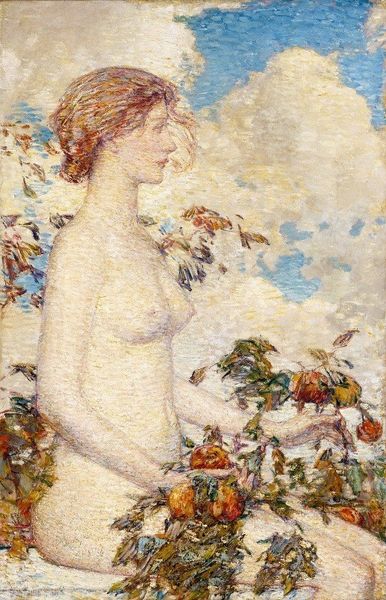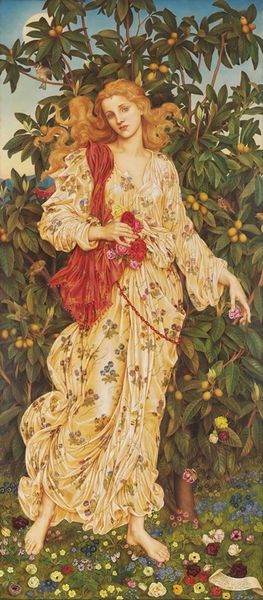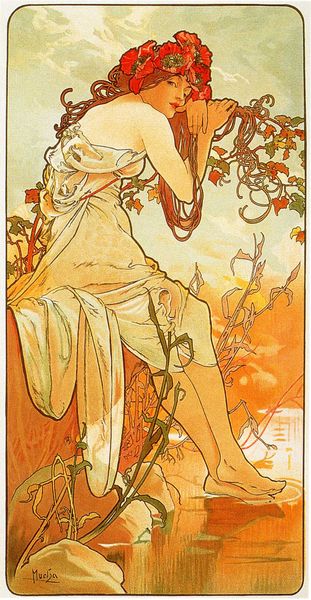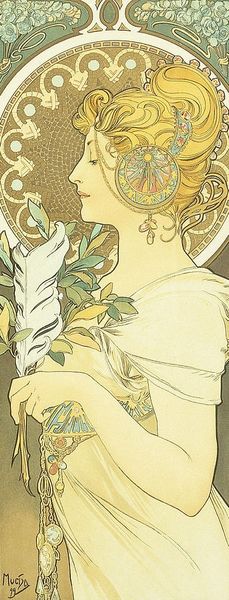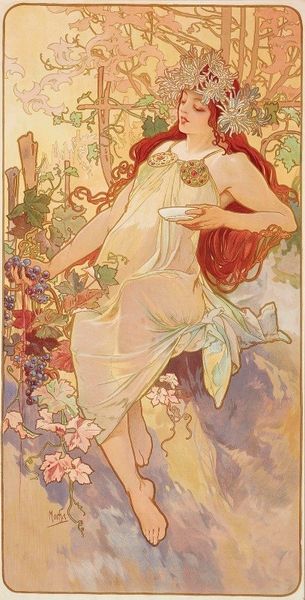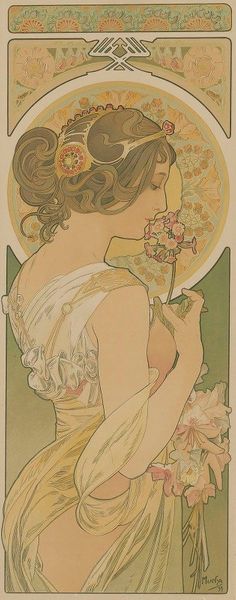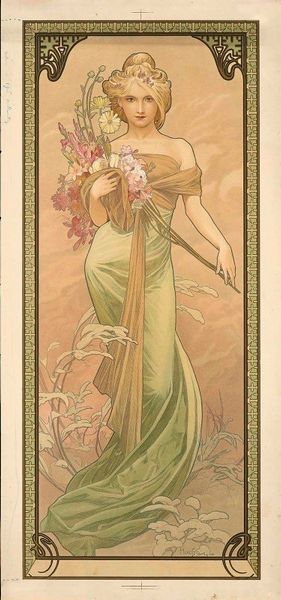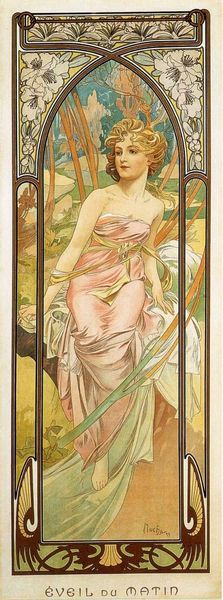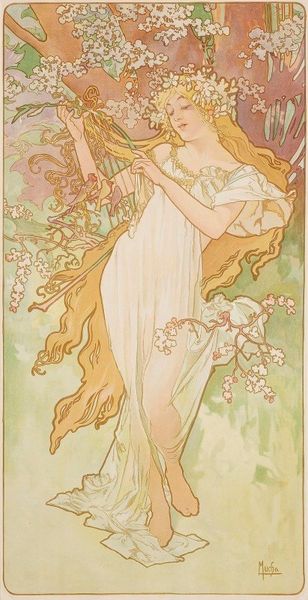
tempera, painting
#
portrait
#
art-nouveau
#
tempera
#
painting
#
landscape
#
figuration
#
art nouveau
Copyright: Public domain
Curator: Alphonse Mucha's "Four Seasons: Summer," realized in tempera, presents an idyllic vision. The use of figuration here—it’s immediately striking. It just radiates this kind of luminous warmth, doesn't it? Editor: It does, but what's more fascinating is the materiality and reproductive capacity associated with the tempera’s creation. Consider what went into the labor and sourcing of materials—the ground pigments, the egg yolks binding everything together—elements inextricably linked to the earth’s seasonal yields, themselves a product of material conditions. Curator: Absolutely, and beyond the earthly pigments, Mucha’s portrayal echoes deeper socio-political constructs of femininity and the pastoral idyll. It's a nostalgic look backward at the supposed simplicity and innocence of rural life and it taps into the role of women within such imagined societies. Editor: I find the so-called "idyllic" theme you described somewhat uncompelling, actually. But yes, I suppose its themes served to naturalize labor roles in a quickly industrializing Europe that saw many pushed out of agricultural lifestyles into factories. Curator: Exactly! This wasn't just some detached aesthetic pursuit. Mucha worked within and was informed by, broader cultural narratives about national identity and social stability during a period of massive social upheaval. Think about the political landscape! The burgeoning feminist movements and this image presents, perhaps, an almost defensive reinforcement of traditional roles? Editor: Well, even taking your perspective on feminism here into account, it’s undeniable that mass reproduction processes played a part here, right? Consider posters or decorative panels—meant for broad consumption within growing urban middle classes seeking a refined association to beauty in everyday lives. That meant that artists like Mucha were being subsidized by burgeoning markets to produce accessible symbols of aspiration through this mode of mechanical reproduction, making the production far easier than more bespoke products. Curator: Precisely. It reminds us how artwork simultaneously exists in both rarefied cultural spheres but is at the same time is embedded and entwined with manufacturing, material production, and its corresponding social systems of distribution, even during the Art Nouveau period. Thanks for pulling my mind back towards a more tangible interpretation. Editor: Of course. When viewing artworks, situating materiality within wider art histories really allows for an expansive grasp on context. I now perceive it as having greater meaning within my larger interpretation of history, and that’s where the real charm arises!
Comments
No comments
Be the first to comment and join the conversation on the ultimate creative platform.
